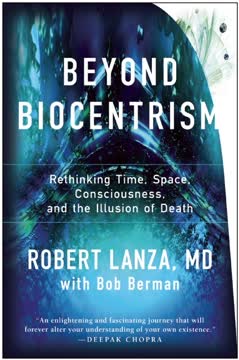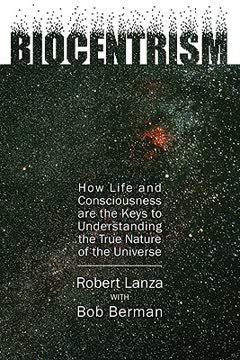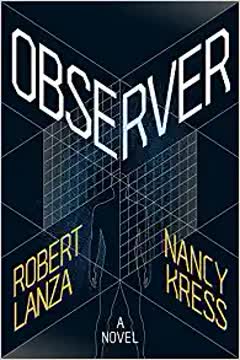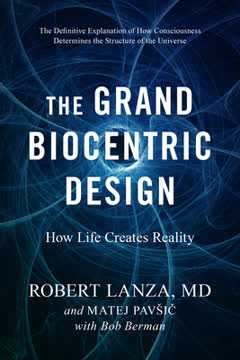Key Takeaways
1. Reality is Shaped by Consciousness, Not the Other Way Around
If we listen to what the science is telling us, it becomes ever more clear that life and consciousness are fundamental to any true understanding of the universe.
Consciousness First. The prevailing scientific model places the material universe as primary, with consciousness arising as a byproduct. Biocentrism flips this, asserting that consciousness is fundamental, and the universe as we perceive it is shaped by our awareness. This perspective challenges the notion of a purely objective reality, independent of the observer.
Quantum Physics Support. Quantum experiments, like the double-slit experiment, demonstrate that the act of observation affects the behavior of particles. This suggests that consciousness is not merely a passive observer but an active participant in shaping reality. The observer's awareness collapses the wave function, causing particles to materialize in a specific state.
Implications for Understanding. By recognizing the central role of consciousness, we can begin to address some of the most perplexing questions in science, such as the origin of life and the nature of time. This shift in perspective offers a new framework for understanding the universe, one that is more complete and satisfying than traditional explanations.
2. Time is a Tool, Not a Tyrant
Time is the inner sense that animates the still frames of the spatial world.
Time as a Construct. Time is not an independent entity flowing through the universe. Instead, it is a construct of our consciousness, a way for us to organize and make sense of our experiences. This perspective challenges the linear, sequential view of time that dominates our everyday lives.
Evidence from Physics. Einstein's theory of relativity demonstrates that time is relative, not absolute. The passage of time can vary depending on factors such as gravity and velocity. Furthermore, many equations in physics are time-symmetrical, meaning they work equally well whether time is moving forward or backward.
Living in the Now. By understanding that time is a construct, we can free ourselves from its constraints and focus on the present moment. This can lead to a greater sense of peace and fulfillment, as well as a deeper appreciation for the richness of our experiences.
3. The Universe is a Single, Interconnected Entity
Aristotle, in his groundbreaking Physics, held the view that the universe is a single entity with a fundamental connectedness between all things, and that the cosmos is eternal.
Rejecting Duality. The traditional scientific model separates the observer from the observed, creating a dichotomy between the conscious self and the external world. Biocentrism rejects this duality, asserting that the universe is a single, interconnected entity. Everything is part of a unified whole.
Quantum Entanglement. Quantum entanglement provides evidence for this interconnectedness. Entangled particles, even when separated by vast distances, exhibit instantaneous correlations. This suggests that there is a deeper level of reality where space and time do not exist.
Implications for Ethics. Recognizing the interconnectedness of all things has profound implications for ethics and morality. If we are all part of a single entity, then harming others is ultimately harming ourselves. This perspective promotes compassion, empathy, and a sense of responsibility for the well-being of the entire planet.
4. Death is an Illusion, a Transition, Not an End
The day which we fear as our last is but the birthday of eternity.
Consciousness Endures. Death is not the end of existence, but rather a transition from one state of consciousness to another. Because consciousness creates reality, it cannot be destroyed. It simply changes form.
Time's Irrelevance. Since time is a construct of consciousness, death, as a temporal event, loses its meaning. The past, present, and future are all interconnected and exist simultaneously. Therefore, death is not a finality but a shift in perspective.
Immortality Redefined. Biocentrism offers a new perspective on immortality. We are not immortal in the sense of living forever in a physical body. Instead, our consciousness continues to exist in some form, perhaps in another universe or dimension. This offers comfort and hope in the face of mortality.
5. Space is a Mental Construct, Not an Empty Void
Space and time are merely the mind’s tools for effortlessly putting everything together.
Space as a Tool. Space is not an empty container in which objects exist. Instead, it is a tool of our consciousness, a way for us to organize and make sense of our perceptions. This perspective challenges the notion of a vast, lifeless universe stretching out infinitely in all directions.
Evidence from Relativity. Einstein's theory of relativity demonstrates that space is relative, not absolute. The distance between two points can vary depending on the observer's frame of reference. This suggests that space is not a fixed entity but a flexible construct.
The Universe Within. By understanding that space is a construct, we can shift our perspective from looking out at the universe to recognizing that the universe is within us. This can lead to a greater sense of connection and belonging, as well as a deeper appreciation for the power of our own minds.
6. Randomness is Limited; Design is Evident
Whence arises all that Order and Beauty which we see in the world? . . . How came the bodies of animals to be contrived with so much art? . . . Was the eye contrived without skill in optics?
Fine-Tuning of the Universe. The universe exhibits an extraordinary degree of fine-tuning, with physical constants and laws precisely calibrated to allow for the emergence of life. This suggests that randomness alone cannot account for the complexity and order we observe.
Challenges to Darwinism. While evolution explains adaptation and change, it struggles to explain the origin of complex structures like the eye. The simultaneous, interdependent mutations required for such structures to arise by chance are statistically improbable.
A Life-Friendly Cosmos. The universe appears to be designed for life. This design may be the result of an underlying intelligence or a fundamental principle that favors the emergence of life. Biocentrism offers a framework for understanding this life-friendly cosmos.
7. The Observer Creates Reality
We are inescapably involved in bringing about that which appears to be happening.
The Power of Observation. Quantum experiments demonstrate that the act of observation affects the outcome of events. This suggests that the observer is not merely a passive witness but an active participant in creating reality.
Wheeler's Delayed Choice Experiment. John Wheeler's delayed choice experiment illustrates that our present observations can influence past events. This challenges the notion of a fixed, predetermined past and suggests that the universe is constantly being created in the present moment.
Implications for Free Will. If the observer creates reality, then we have a greater degree of free will than previously thought. Our choices and actions can shape the universe around us. This perspective empowers us to take responsibility for our lives and create a better future.
8. Machines Cannot Achieve True Awareness
Maybe the only significant difference between a really smart simulation and a human being was the noise they made when you punched them.
The Mystery of Feeling. While machines can perform complex calculations and mimic human behavior, they lack the subjective experience of feeling. This raises the question of whether true consciousness can arise from purely physical processes.
The Hard Problem of Consciousness. David Chalmers identifies the "hard problem" of consciousness as explaining how and why we have subjective experiences at all. This problem remains unsolved and suggests that consciousness may require something beyond physical explanations.
Biocentrism's Perspective. Biocentrism suggests that consciousness is fundamental and cannot be reduced to mere computation. Therefore, machines, which are based on physical processes, cannot achieve true awareness. This perspective challenges the notion of a technological singularity where machines surpass human intelligence.
9. Embrace a Life-Centered View for a Sustainable Future
The real Temple is the whole world, and there is nothing as divinely blessed as a blooming growing garden.
Shifting from Anthropocentrism. The traditional worldview places humans at the center of the universe, with nature existing solely for our benefit. Biocentrism challenges this anthropocentric view, asserting that all life is valuable and interconnected.
Respect for All Life. Recognizing the inherent worth of all living things promotes a more sustainable and ethical approach to the environment. This includes reducing our consumption, protecting biodiversity, and promoting ecological balance.
A New Environmental Ethic. By embracing a life-centered view, we can create a more harmonious relationship with nature. This requires a shift in values, from prioritizing economic growth to prioritizing the well-being of the planet and all its inhabitants.
10. The Quest for Understanding is Ongoing
Pure logical thinking cannot yield us any knowledge of the empirical world; all knowledge of reality starts from experience and ends in it.
Limitations of Logic. While logic is a valuable tool, it cannot provide a complete understanding of reality. Our experiences and perceptions also play a crucial role in shaping our knowledge.
The Importance of Open-Mindedness. The quest for understanding requires a willingness to challenge our assumptions and embrace new perspectives. This includes being open to ideas that may seem counterintuitive or even paradoxical.
A Continuous Journey. The search for truth is an ongoing journey, not a destination. There will always be new questions to ask and new mysteries to explore. The key is to remain curious, humble, and open to the ever-evolving nature of reality.
Last updated:
FAQ
1. What is "Beyond Biocentrism" by Robert Lanza about?
- Explores Biocentrism Theory: The book presents and expands on the theory of biocentrism, which posits that life and consciousness are fundamental to understanding the universe, rather than being mere byproducts of physical processes.
- Challenges Conventional Science: Lanza and Berman argue that traditional science, which treats the universe as existing independently of observers, is incomplete and fails to explain key mysteries like consciousness, time, and the fine-tuning of the cosmos.
- Integrates Science and Philosophy: The book weaves together findings from quantum physics, cosmology, biology, and philosophy to propose a new worldview where consciousness creates reality.
- Addresses Big Questions: It tackles profound questions about the nature of time, space, death, and the possibility of machine or plant consciousness, aiming to reshape our understanding of existence.
2. Why should I read "Beyond Biocentrism" by Robert Lanza?
- Offers a Radical Perspective: The book provides a thought-provoking alternative to the materialist view of reality, encouraging readers to question deeply held assumptions about life and the universe.
- Accessible Science Writing: Lanza and Berman explain complex scientific concepts in clear, engaging language, making advanced topics like quantum mechanics and consciousness approachable for non-experts.
- Addresses Universal Human Concerns: It delves into questions about death, the afterlife, and the meaning of existence, offering comfort and new ways to think about mortality.
- Stimulates Critical Thinking: Readers are invited to critically examine the limitations of current scientific models and consider the implications of a consciousness-centered universe.
3. What are the key takeaways from "Beyond Biocentrism"?
- Consciousness is Central: The book asserts that consciousness is not a byproduct of the universe but a fundamental component that shapes reality itself.
- Time and Space Are Illusions: Lanza argues that time and space are constructs of the mind, not absolute entities existing independently of observers.
- Science Needs the Observer: Quantum experiments demonstrate that the act of observation is crucial in determining physical outcomes, challenging the notion of an objective, observer-independent universe.
- Death is Not the End: The book suggests that death, as commonly understood, is an illusion, and consciousness persists beyond physical demise.
4. How does "Beyond Biocentrism" define and explain biocentrism?
- Life Creates the Universe: Biocentrism is the idea that life and consciousness are the primary reality, and the universe arises from them, not the other way around.
- Observer-Dependent Reality: The theory holds that the physical world cannot exist without conscious observers; reality is a process that involves both the observer and the observed.
- Supported by Quantum Physics: Biocentrism draws on quantum experiments (like the double-slit experiment) that show observation affects the behavior of particles, implying consciousness shapes physical reality.
- Contrasts with Materialism: Unlike materialist science, which sees consciousness as an accidental byproduct, biocentrism places it at the center of existence.
5. What does "Beyond Biocentrism" say about the nature of time and space?
- Time is a Mental Construct: The book argues that time does not exist as an external, absolute entity; it is a framework created by consciousness to organize experiences.
- Space is Not Absolute: Space, like time, is seen as a tool of the mind, not a physical container in which events occur independently of observers.
- Relativity and Quantum Evidence: Lanza uses examples from relativity (time dilation, space contraction) and quantum mechanics (nonlocality, entanglement) to show that time and space are flexible and observer-dependent.
- Implications for Reality: If time and space are not fundamental, then our usual understanding of causality, history, and the universe's structure must be re-examined.
6. How does "Beyond Biocentrism" address the mystery of consciousness?
- Consciousness as Fundamental: The book treats consciousness as a primary aspect of reality, not something that emerges from complex arrangements of matter.
- Science’s Inability to Explain: Lanza points out that current science cannot explain how subjective experience arises from physical processes, calling it the "hard problem" of consciousness.
- Quantum Connection: The authors highlight experiments where the observer’s knowledge or measurement changes physical outcomes, suggesting consciousness is inseparable from the fabric of reality.
- Beyond the Brain: The book challenges the idea that consciousness is confined to the brain, proposing it is a universal property intertwined with existence itself.
7. What role does quantum physics play in "Beyond Biocentrism"?
- Observer Effect: The book discusses quantum experiments (like the double-slit and entanglement experiments) where the act of observation determines the outcome, supporting the biocentric view.
- Nonlocality and Entanglement: Lanza uses the phenomenon of entangled particles—where changes to one instantly affect another, regardless of distance—to argue that space and separation are illusions.
- Retrocausality: The book explores the idea that present observations can influence past events at the quantum level, further challenging linear time and objective reality.
- Limits of Classical Physics: Quantum mechanics is presented as evidence that the universe does not operate according to deterministic, observer-independent laws.
8. How does "Beyond Biocentrism" challenge the idea of a random, accidental universe?
- Improbability of Life: The book details how the physical constants of the universe are finely tuned for life, making a purely random origin statistically implausible.
- Critique of Chance: Lanza argues that chance alone cannot account for the complexity and order observed in biology and cosmology.
- Multiverse Skepticism: The authors critique the multiverse hypothesis as an unfalsifiable attempt to explain fine-tuning without invoking consciousness or design.
- Biocentrism as an Alternative: The book proposes that the universe appears life-friendly because it is life and consciousness that bring the universe into being.
9. What does "Beyond Biocentrism" say about death and immortality?
- Death as an Illusion: The book claims that death, as a final end to consciousness, is a misconception rooted in the false belief in an objective, time-bound universe.
- Consciousness Persists: Lanza suggests that because consciousness is fundamental and not confined to the body, it does not cease with physical death.
- No Absolute Time: Without absolute time, the idea of a before and after death loses meaning; all experiences are "now" from the perspective of consciousness.
- Reboot or Continuity: The book likens death to a "reboot" or a shift in the observer’s experience, rather than an end.
10. How does "Beyond Biocentrism" address the possibility of consciousness in machines and plants?
- Machine Consciousness Skepticism: The authors question whether artificial intelligence, no matter how complex, can achieve true subjective awareness, as consciousness may not arise from computation alone.
- Plant Awareness: The book explores evidence that plants possess forms of perception, memory, and response, suggesting a spectrum of consciousness in living systems.
- Consciousness Beyond Brains: Lanza argues that consciousness is not limited to organisms with brains, but may be a property of life itself, manifesting in diverse ways.
- Implications for AI and Biology: The discussion challenges assumptions about what entities can be conscious and what criteria are necessary for awareness.
11. What practical or philosophical advice does "Beyond Biocentrism" offer for understanding reality and our place in the universe?
- Question Assumptions: The book encourages readers to critically examine the materialist worldview and consider the centrality of consciousness in shaping reality.
- Embrace Unity: Lanza suggests that recognizing the interconnectedness of observer and observed can lead to a sense of oneness with the universe, reducing existential anxiety.
- Rethink Death and Meaning: By viewing consciousness as fundamental and death as an illusion, readers are invited to find comfort and new meaning in existence.
- Integrate Science and Experience: The authors advocate for a worldview that honors both scientific evidence and direct, subjective experience as valid ways of knowing.
12. What are the best quotes from "Beyond Biocentrism" by Robert Lanza, and what do they mean?
- “Why do you insist the universe is not a conscious intelligence, when it gives birth to conscious intelligences?” —Cicero, quoted in the introduction, highlighting the paradox of denying consciousness to the universe when it produces conscious beings.
- “All of science is based on information passing through our consciousness, but science doesn’t have a clue what consciousness is.” —Emphasizes the central mystery and limitation of current scientific understanding.
- “The universe is sizeless.” —Summarizes the book’s argument that space, like time, is a mental construct without absolute reality.
- “Death does not actually exist.” —Reflects the biocentric view that consciousness is not subject to physical death, challenging conventional notions of mortality.
- “We are not individuals ‘here’ with some empty gap—dead space—standing between us and, say, other galaxies. Space is unreal on multiple levels, and it is misleading to conceive of All There Is as some vast, mostly vacant sphere.” —Encapsulates the book’s challenge to the idea of separation and the reality of space.
Review Summary
Beyond Biocentrism presents a controversial theory proposing that consciousness creates reality, challenging traditional scientific views. Readers find the book thought-provoking but divisive, with some praising its innovative ideas and others criticizing its lack of scientific rigor. Many appreciate the explanations of quantum physics concepts, while others feel the authors make unsupported leaps in logic. The book's exploration of consciousness, reality, and the nature of the universe sparks curiosity and debate, though its conclusions remain contentious among readers and scientists alike.
Similar Books
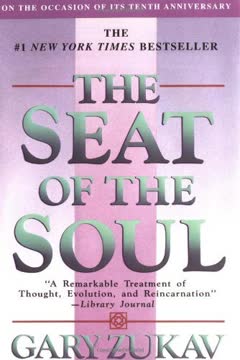
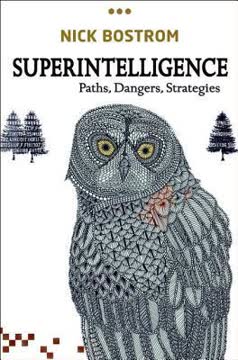
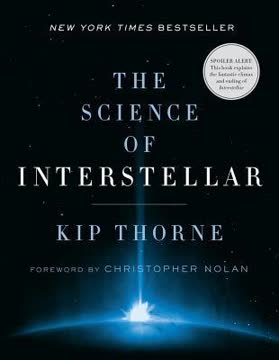
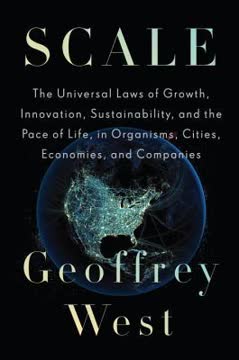
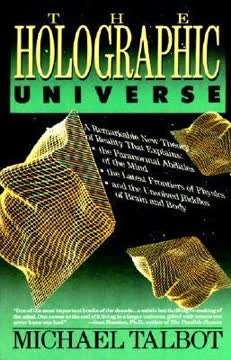
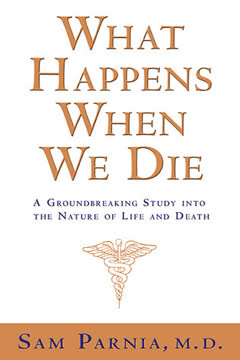
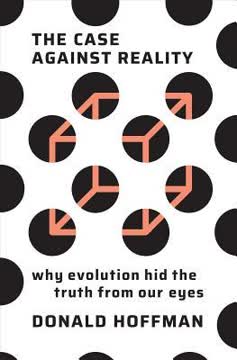
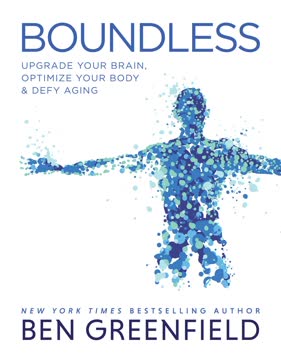
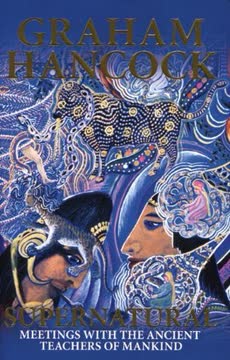
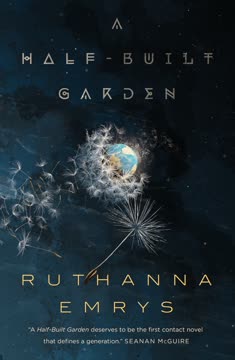
Download PDF
Download EPUB
.epub digital book format is ideal for reading ebooks on phones, tablets, and e-readers.
